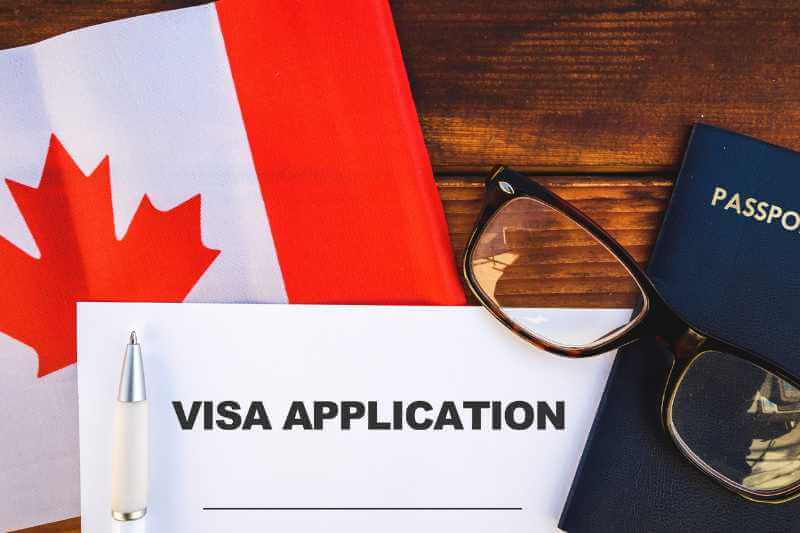
If you’re planning on travelling to Canada, whether for work or simply to visit, you may need to apply for a visa. A visa authorizes you to enter Canada, although this authorization can be revoked in certain circumstances. Each type of visa is different and has its own procedures and limitations, but the steps involved in applying for them are broadly similar.
Find out if you need a visa.
Not every traveller planning on entering Canada needs a visa. Indeed, since visitors from the United States typically don’t require visas, most people who visit Canada each year do so without a visa. Your country may be on the list of visa-exempt nations whose nationals should instead apply for an electronic travel authorization or eTA. If it is, you’ll probably be able to apply for an eTA, a quicker and less expensive process than applying for a visa.
Determine what kind of visa you need
If you do require a visa to travel to Canada, the exact process of applying for one will depend on the kind of visa you require. For instance, if you’re just visiting the country as a tourist, your visa application process will be different from that of someone who wants to visit Canada for work or from that of someone who wants to settle permanently. Even within each broad category, there are a wide range of visa applications open. If you doubt which type of application is right for your situation, consulting an immigration lawyer can give you some insight.
Collect your documents
The type of visa you’re applying for will determine the documents that you need for your application, although there are some commonalities between all application types. You’ll need some kind of identity document, such as a valid passport, to make your application. You may also need to prove the basis for your visa. For instance, if you want to travel to Canada for a family visit, you will need to prove that you are related to the person you claim to be visiting, which could require a document such as a birth certificate or marriage license.
Some documents are optional but can be useful as part of your visa application. For example, if you’re applying to visit Canada as a business traveller, you don’t have to submit a letter from your employer confirming that you work for them. However, you can do so; a letter of this kind confirms that your visit to Canada is on behalf of your employer and may make your application more likely to succeed.
Each type of visa application has different document requirements, so make sure that you have everything you need before you begin your application. Problems with your documents could delay your application or even lead to it being denied.
Apply online
Most applications for visas to visit or settle in Canada take place online. In order to make your online application, you’ll need to create an account on the website of Immigration, Refugees and Citizenship Canada (IRCC). Once you’ve done that and begun your application, you’ll be able to upload your supporting documents. In addition, you’ll have to pay an application fee.
Provide biometrics
As part of your application, you’ll need to supply IRCC with your biometric information. This is just another way of saying that you’ll need to give them your fingerprints and a photograph. However, not just any fingerprints or photographs will do; there are specific rules governing how you can provide this biometric information. You’ll have to make a free appointment at an official biometrics collection site. If you can’t do this, for instance, because local biometric services have been disrupted, you may be able to make alternative arrangements, but most travellers need to make a biometrics appointment.
Wait for processing
Once you’ve submitted your application and provided your biometric data, there’s nothing more to do for now. You’ll need to wait for IRCC to process your visa application. This can take as little as a few weeks, but the processing time varies depending on the type of application, the circumstances of your particular application, and other factors, such as the volume of applications. Since processing times can be unpredictable, it’s best to begin your application as early as possible to make sure that you can travel when you want to.
Provide your passport
Once you’ve received word that your visa application has been approved, you’ll need to provide IRCC with your passport or other travel documents. You’ll receive instructions on how to do this securely once your application is approved. When you get your passport back, the visa will have been added to it, allowing you to travel with confidence.
Prepare any additional documents needed.
In some cases, you may need to bring some documents in addition to your visa when you enter Canada. For instance, if you’re travelling with a child under the age of 18 and both parents aren’t present, you may need to provide a letter from a parent authorizing the child to travel or proof that you don’t need one (in case of a deceased parent or a parent with sole custody). The exact documents required vary on a case-by-case basis, so make sure that you know what you need and have it to hand.
It’s important to remember that most travellers with visas are admitted to Canada, but a visa doesn’t guarantee admission. A border services officer can still deny you admission, and having the correct documents with you at your port of entry can help prevent this.
Canada offers a wide range of visas for different types of travellers. Whether you’re just visiting or intending to stay, the key to success in your application is choosing the right type of visa and supporting your application with the needed documents. Although the range of options can seem daunting at first, following the procedure methodically gives you the best chance of a smooth application and a worry-free trip to Canada.